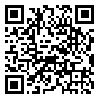Volume 8, Issue 4 (Journal of Control, V.8, N.4 Winter 2015)
JoC 2015, 8(4): 43-53 |
Back to browse issues page
Download citation:
BibTeX | RIS | EndNote | Medlars | ProCite | Reference Manager | RefWorks
Send citation to:



BibTeX | RIS | EndNote | Medlars | ProCite | Reference Manager | RefWorks
Send citation to:
Abolhasani zarjoo M, Mozafari S B, Amraee T. Control Of Wind Turbine With Double Fed Induction Generator To Track For Maximum Wind Power . JoC 2015; 8 (4) :43-53
URL: http://joc.kntu.ac.ir/article-1-191-en.html
URL: http://joc.kntu.ac.ir/article-1-191-en.html
1- islamic azad university, science and research branch, tehran
Abstract: (20617 Views)
Among renewable energies, wind energy has attracted more attention since 1991. The main objective for utilization of the wind plant is to reduce cost and environment pollution. It is well known that the power delivered by wind turbines which are directly coupled with grid is not constant as a result of wind variability. Thus in spite of sudden wind speed variations, farm generators should always be capable of extracting maximum possible mechanical power from the wind and converting it in to electrical power. Variable speed wind turbines are commonly equipped with doubly fed induction generators (DFIG). In fact, doubly fed induction generators are wound rotor induction generators that their stators are connected to grid directly and their rotors are connected to grid through two PWM back to back power electronic converters.
This thesis focuses on control of a grid-connected doubly fed induction generator (DFIG) based wind turbine system in order to track maximum absorbable power in different wind speeds.
First, the dynamic model of wind turbine, gear box and DFIG is developed. Then, a generalized regression neural network (GRNN) is used to estimate wind speed and the maximum absorbable power is determined through a look up table for per wind speed.
Finally vector control employs PI controller to calculate the required rotor control voltage for control of active and reactive power and obtaining maximum power from wind turbine. Simulation results on 1-MW wind turbine are provided and show the effectiveness of the new technique, for tracking maximum power. Also, this scheme has acceptable harmonic spectra of stator current from the perspective power quality. MATLAB/Simulink(R2012b) software has been used for simulating.
Type of Article: Research paper |
Subject:
Special
Received: 2015/01/15 | Accepted: 2015/03/16 | Published: 2015/03/16
Received: 2015/01/15 | Accepted: 2015/03/16 | Published: 2015/03/16
Send email to the article author
| Rights and permissions | |
 |
This work is licensed under a Creative Commons Attribution-NonCommercial 4.0 International License. |






